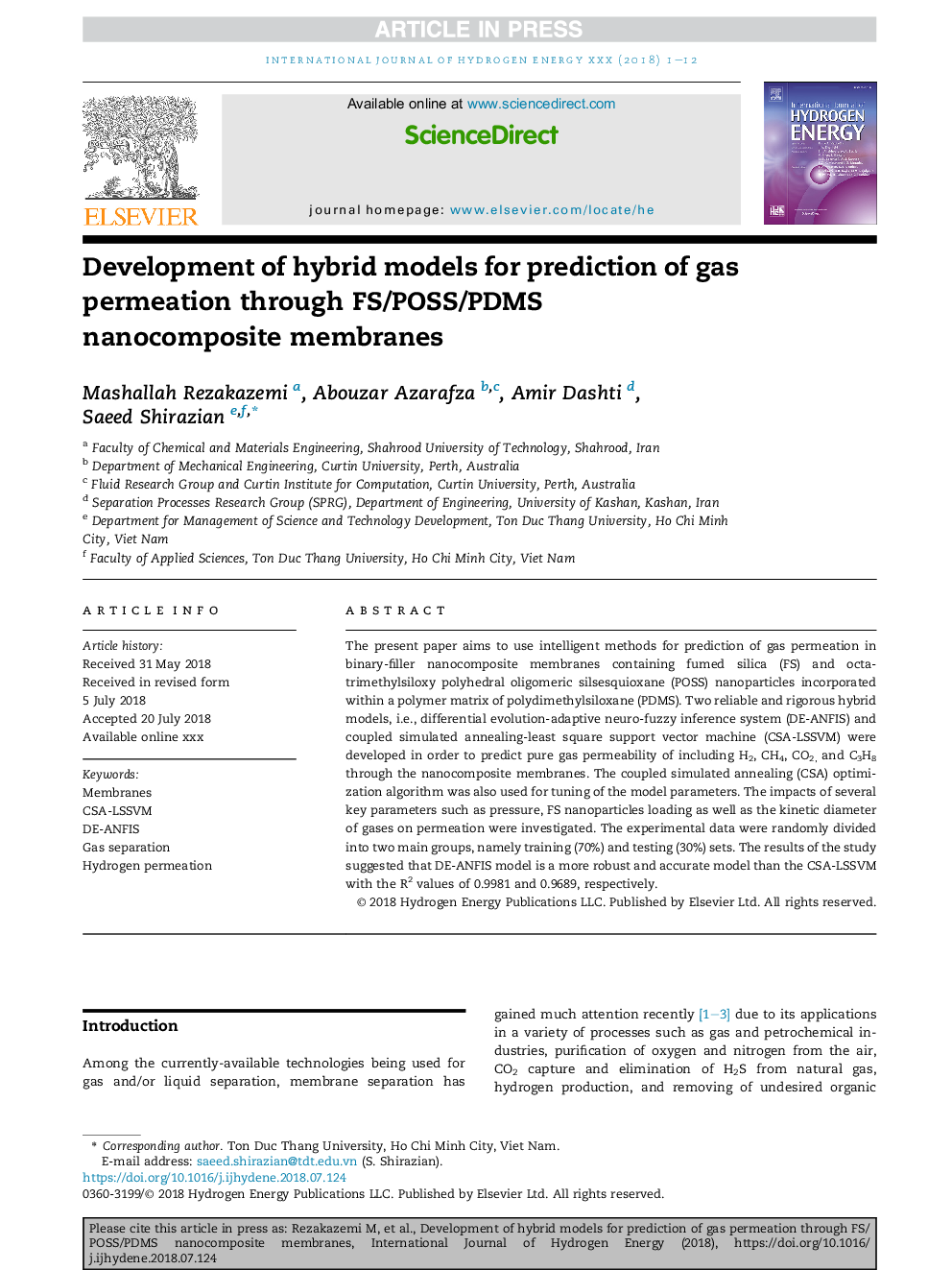| Article ID | Journal | Published Year | Pages | File Type |
|---|---|---|---|---|
| 8948268 | International Journal of Hydrogen Energy | 2018 | 12 Pages |
Abstract
The present paper aims to use intelligent methods for prediction of gas permeation in binary-filler nanocomposite membranes containing fumed silica (FS) and octatrimethylsiloxy polyhedral oligomeric silsesquioxane (POSS) nanoparticles incorporated within a polymer matrix of polydimethylsiloxane (PDMS). Two reliable and rigorous hybrid models, i.e., differential evolution-adaptive neuro-fuzzy inference system (DE-ANFIS) and coupled simulated annealing-least square support vector machine (CSA-LSSVM) were developed in order to predict pure gas permeability of including H2, CH4, CO2, and C3H8 through the nanocomposite membranes. The coupled simulated annealing (CSA) optimization algorithm was also used for tuning of the model parameters. The impacts of several key parameters such as pressure, FS nanoparticles loading as well as the kinetic diameter of gases on permeation were investigated. The experimental data were randomly divided into two main groups, namely training (70%) and testing (30%) sets. The results of the study suggested that DE-ANFIS model is a more robust and accurate model than the CSA-LSSVM with the R2 values of 0.9981 and 0.9689, respectively.
Related Topics
Physical Sciences and Engineering
Chemistry
Electrochemistry
Authors
Mashallah Rezakazemi, Abouzar Azarafza, Amir Dashti, Saeed Shirazian,
